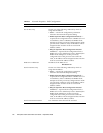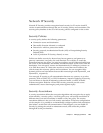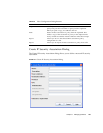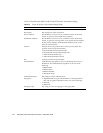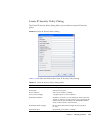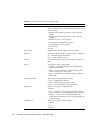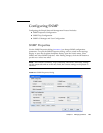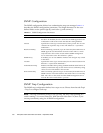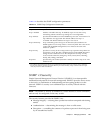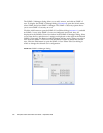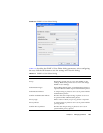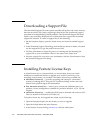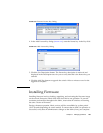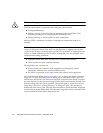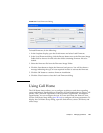
150 Enterprise Fabric Suite 2007 User Guide • September 2008
SNMP Configuration
The SNMP configuration defines how authentication traps are managed.TABLE 5-11
describes the SNMP configuration parameters. The illegal characters for the user-
defined fields are the pound sign (#), semi-colon (;), and comma (,).
SNMP Trap Configuration
The SNMP trap configuration defines how traps are set. Choose from the tabs Trap1
– Trap 5 to configure each trap.
Note – The Trap Community string is now per trap, but only when pointing at a
switch running 7.4 or newer firmware. With firmware older than 7.4, there is just
one trap community string for all SNMP configuration.
TABLE 5-11 SNMP Configuration Parameters
Parameter Description
SNMP Enabled Enables or disables SNMP communication with other switches in
the fabric. If disabled, the user cannot use an SNMP application at a
workstation to talk to the switch that has this setting disabled.
Contact Specifies the name (up to 64 characters) of the person who is to be
contacted to respond to trap events. The default is “<sysContact
undefined>”.
Read Community Read community password (up to 32 characters) that authorizes an
SNMP agent to read information from the switch. This is a write-
only field. The value on the switch and the SNMP management
server must be the same. The default is “public”.
SNMP Proxy If enabled, you can use SNMP to monitor and configure any switch
in the fabric.
Location Specifies the name (up to 64 characters) for the switch location. The
default is “<sysLocation undefined>”.
Authentication Trap Enables or disables the reporting of SNMP authentication failures. If
enabled, a notification trap is sent when incorrect community string
values are used. The default value is False.
Write Community Write community password (up to 32 characters) that authorizes an
SNMP client to write information to the switch. This is a write-only
field. The value on the switch and the SNMP management server
must be the same. The default is “private”.



